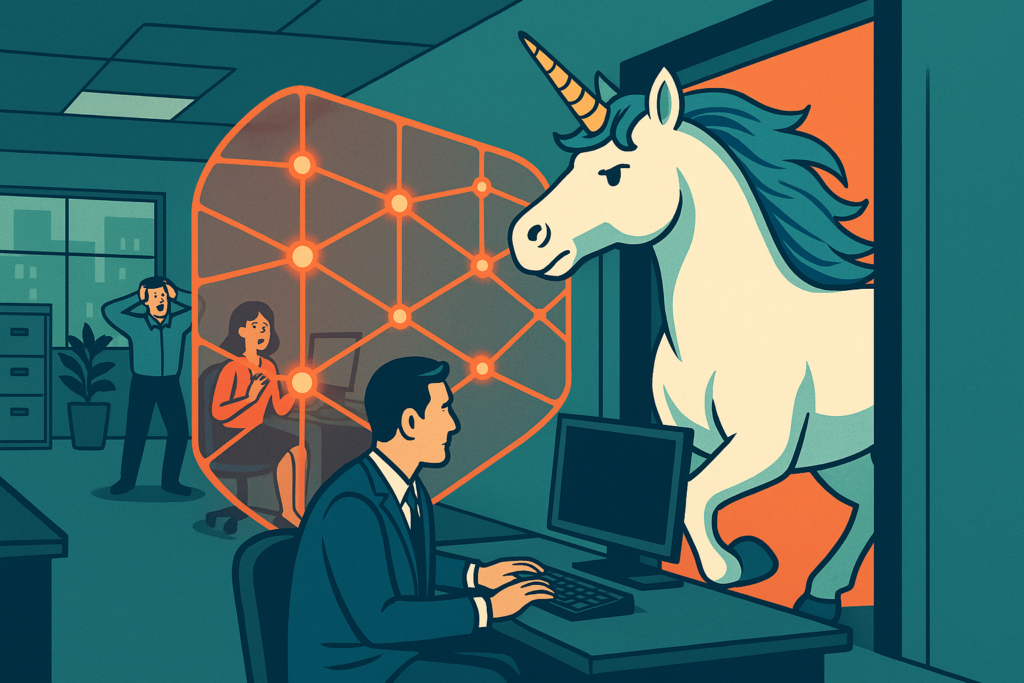The Need for Next-Gen Data Security in the Age of Generative AI

About 20 years ago, Data Loss Prevention (DLP) emerged as a novel cybersecurity solution. Instead of just focusing on source and destination like firewalls, DLP analyzed the content of data transmissions. While DLP has evolved over time, adapting to cloud and incorporating AI, the rise of Generative AI (Gen AI) presents new challenges that traditional DLP simply can’t handle. This blog post explores why.
Beyond Data Exfiltration
Traditional DLP primarily focuses on preventing sensitive data from leaving the organization (exfiltration). While effective in this area, extending DLP to manage both inbound and outbound data has proven difficult. The architecture struggles with distinct policies for different data flows. For example, applying one set of rules for incoming data and another for outgoing data often leads to workarounds, like relying on firewalls for inbound traffic instead of DLP. Organizations must then manage two sets of policies, on two different platforms, designed for two very different purposes.
The Real-Time Imperative of Gen AI
Legacy DLP solutions often focused on email, a non-real-time communication channel. Delays caused by DLP analysis were often masked by existing email infrastructure delays. Even modern DLP solutions can struggle with real-time performance, causing significant delays for emails with multiple recipients. Users are often forced to adapt their workflows, such as creating distribution aliases, to accommodate these inefficiencies. Gen AI, however, is fundamentally bi-directional and real-time, making these performance limitations a critical flaw.
Multi-Modal Data
DLP has always dealt with multi-modal data, such as extracting text from documents or identifying images. However, Gen AI takes multi-modal data to a new level. Consider a Gen AI service summarizing notes and action items from a whiteboard photo. This requires deciphering handwriting, understanding diagrams, and potentially translating multiple languages. Traditional DLP, which might simply block image transmission, lacks the sophisticated analysis needed for these Gen AI workflows.
Redefining “Data”
DLP traditionally focused on sensitive data like PII or financial information. Gen AI expands the definition of “data” to include new security concerns. For example, Gen AI customer support services must be prevented from using profanity or offensive language, which requires more than just keyword filtering. If you think this is just a hypothetical scenario, think again. There have been documented cases of chatbot not only using profanity but also disparaging its own company.
Prompt injection, a cyberattack that manipulates Gen AI to reveal confidential information, is another challenge that traditional DLP struggles to address. These attacks don’t involve sophisticated malware or phishing schemes; they simply use carefully crafted prompts, making them impossible for traditional DLP to detect.
The Limitations of Traditional DLP for Gen AI
Traditional DLP, while valuable, is ill-equipped to handle the unique challenges of Gen AI due to:
- Bi-directional data flow: Gen AI security requires the ability to monitor and moderate both incoming and outgoing data effectively.
- Real-time nature: Gen AI services demand real-time analysis and response, something traditional DLP often can’t provide.
- Multi-modal data: Gen AI’s complex use of multi-modal data requires advanced analysis beyond the capabilities of traditional DLP.
- Redefined “data”: Gen AI expands the definition of sensitive data, requiring new approaches to security.
Organizations must adopt Gen AI-specific security solutions. As Gen AI adoption grows rapidly, these solutions are essential for securing both employees and the organization while maximizing the benefits of this revolutionary technology.